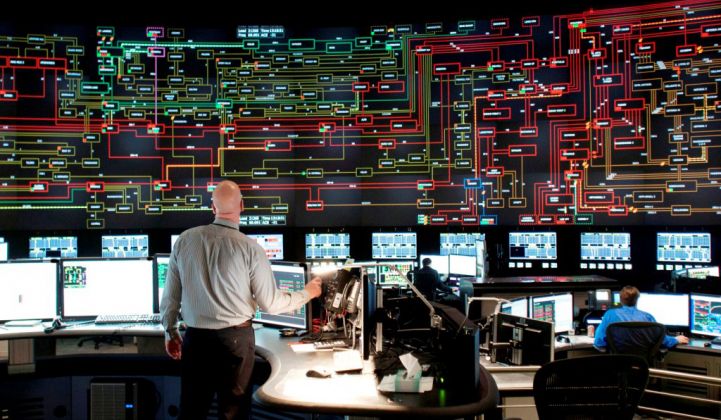As New York struggles with the country’s worst outbreak of the coronavirus pandemic, the state’s grid operator has taken an extreme step that other parts of the country may have to consider in the weeks ahead: asking critical employees to live and work at the control centers that keep the power grid operating, leaving them unsure when they’ll be able to come home.
Last week, 37 employees of state grid operator NYISO — 33 grid operators and managers, plus two facilities workers and two food service staff members — volunteered to sequester themselves at the state’s two grid control centers near the state capital, Albany. The move comes after weeks of preparation by NYISO in the face of a COVID-19 outbreak that has led to 66,496 confirmed cases and 1,218 deaths in New York City and across the state as of Monday afternoon.
Over the coming weeks, the workers will eat and sleep in trailers and work 12-hour shifts in physical isolation from the outside world to avoid the risk of being infected, falling sick and potentially leaving NYISO without the highly trained staff needed to keep its power grid in constant balance.
All have tested negative for the coronavirus, but they’ll still be asked to stay at least six feet from each other, abstain from sharing computer terminals or dining and sleeping spaces, and check often for signs of infection in case their tests yielded false negatives.
It’s all part of a longstanding “business continuity” plan that NYISO has had in place for almost a decade but has not had to implement until now, NYISO CEO Richard Dewey said in a Monday interview. “It might seem like it’s too early. But if you wait until it’s too late, you don’t have the opportunity to make the call.”
NYISO’s decision underscores the vital role grid operators play in keeping the country’s electricity flowing. Utilities and grid operators are among the 16 industries considered “critical infrastructure sectors” by the U.S. Department of Homeland Security, with protocols for maintaining their workforce during emergencies, including pandemics.
Grid operators can’t be easily replaced. The job requires months of training on energy management system software platforms that present “tens of thousands of data points being updated every six seconds” from across the state, Jon Sawyer, NYISO operations manager, said in a phone interview from the site where he’s now sequestered.
The job also requires people who can stay calm and focused in high-stress conditions, many of whom come with experience such as operating reactors on nuclear submarines or in air traffic control centers, he said. “We’re looking for patterns, for abnormalities [… while] being aware of what is the next worst thing that could happen and having an action plan so we’re ready to respond.”
NYISO manages New York's transmission grid and wholesale power market, a sphere that encompasses 11,000 miles of transmission lines and includes more than 700 generation units.
In the extremely unlikely event that both of NYISO’s operations centers are taken out of action, the grid operator can turn that responsibility over to the state’s two largest utilities, Dewey said, with Con Ed taking over operations for the southern half of the state and National Grid for the northern half.
“That’s many, many levels down from the type of emergency that we plan for — but it’s something we drill for every year,” Dewey said.
A step other grid operators may need to follow
NYISO is in regular contact with the state’s utilities and power plant operators to check in on their status and has been advising other U.S. independent system operators (ISOs) in weekly conference calls and daily email exchanges, Dewey said.
Other grid operators have taken steps to limit access to control centers, shield grid operators from other employees, and check all incoming staff for elevated body temperatures or other signs they’ve come down with COVID-19. Many, including mid-Atlantic grid operator PJM and California's CAISO, have reported they’re separating grid operator shifts at their primary control sites and other secondary sites.
But so far, none has announced they’re taking NYISO’s step of sequestering their grid operators on site — although they are preparing to do so if needed.
Nuclear plants taking special precautions
The country’s nuclear power plants are also taking precautions similar to those of grid operators, including health screenings for critical personnel and preparing to call in additional reactor operating staff to cover for any taken ill.
However, “to date we are not aware of any plants taking the action to sequester staff onsite,” a spokesperson from the Nuclear Energy Institute trade group wrote in a Monday email.
Whether other U.S. grid operators or utilities decide to sequester their key operations staff in the coming weeks will depend on factors including the rate of infection in their regions or among their fellow workers. European electric power plant and natural-gas pipeline operators have already been placed in isolation, Reuters reported last week.
As for when NYISO’s volunteers can return to their homes and families, “we’re going to look at guidance from the state and federal government,” Dewey said. “We will keep a close eye on infection rates, both locally and across the state."
"We don’t have an end date for this,” Dewey said, adding: “We have the infrastructure in place to do it indefinitely.”




